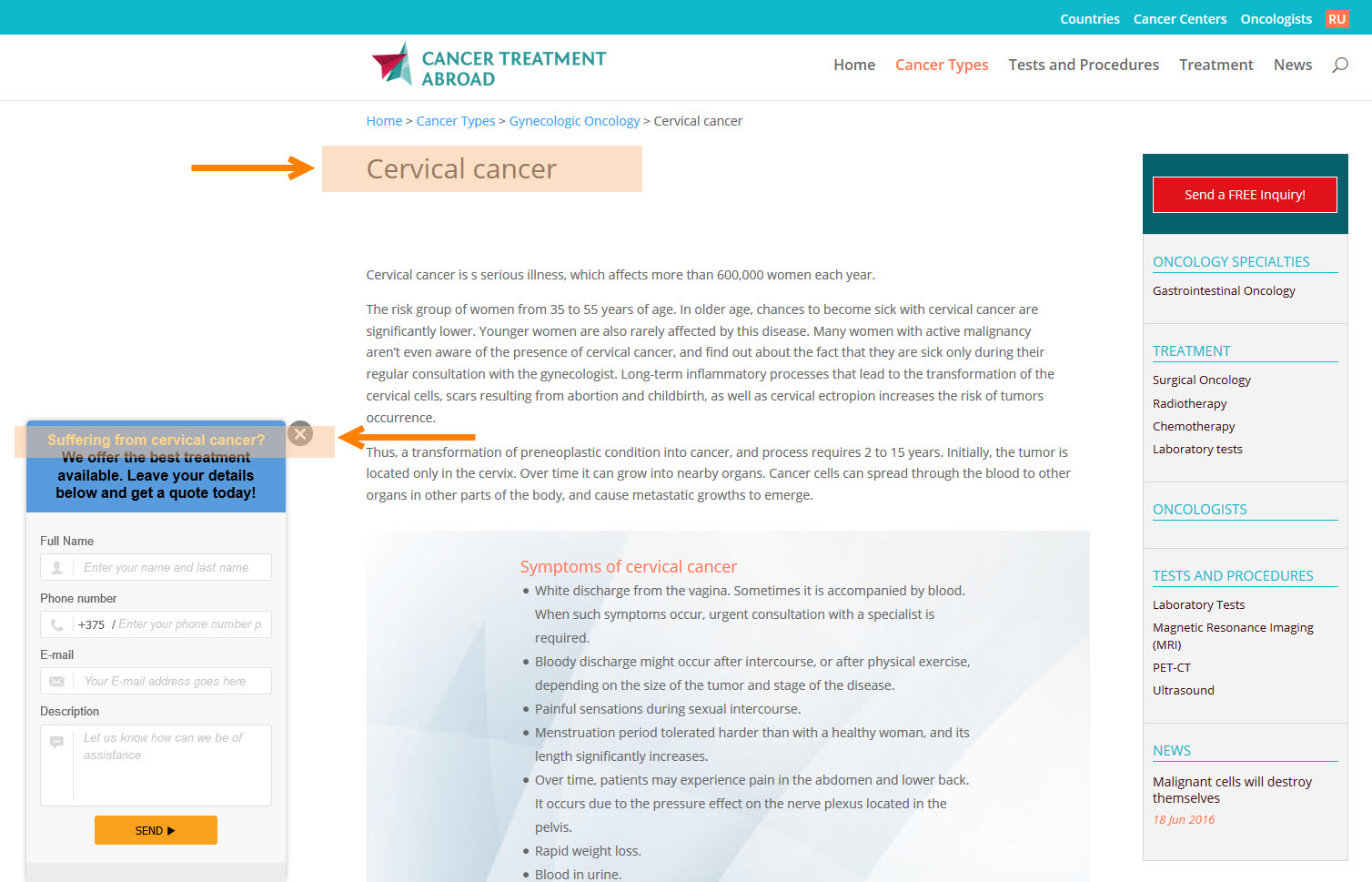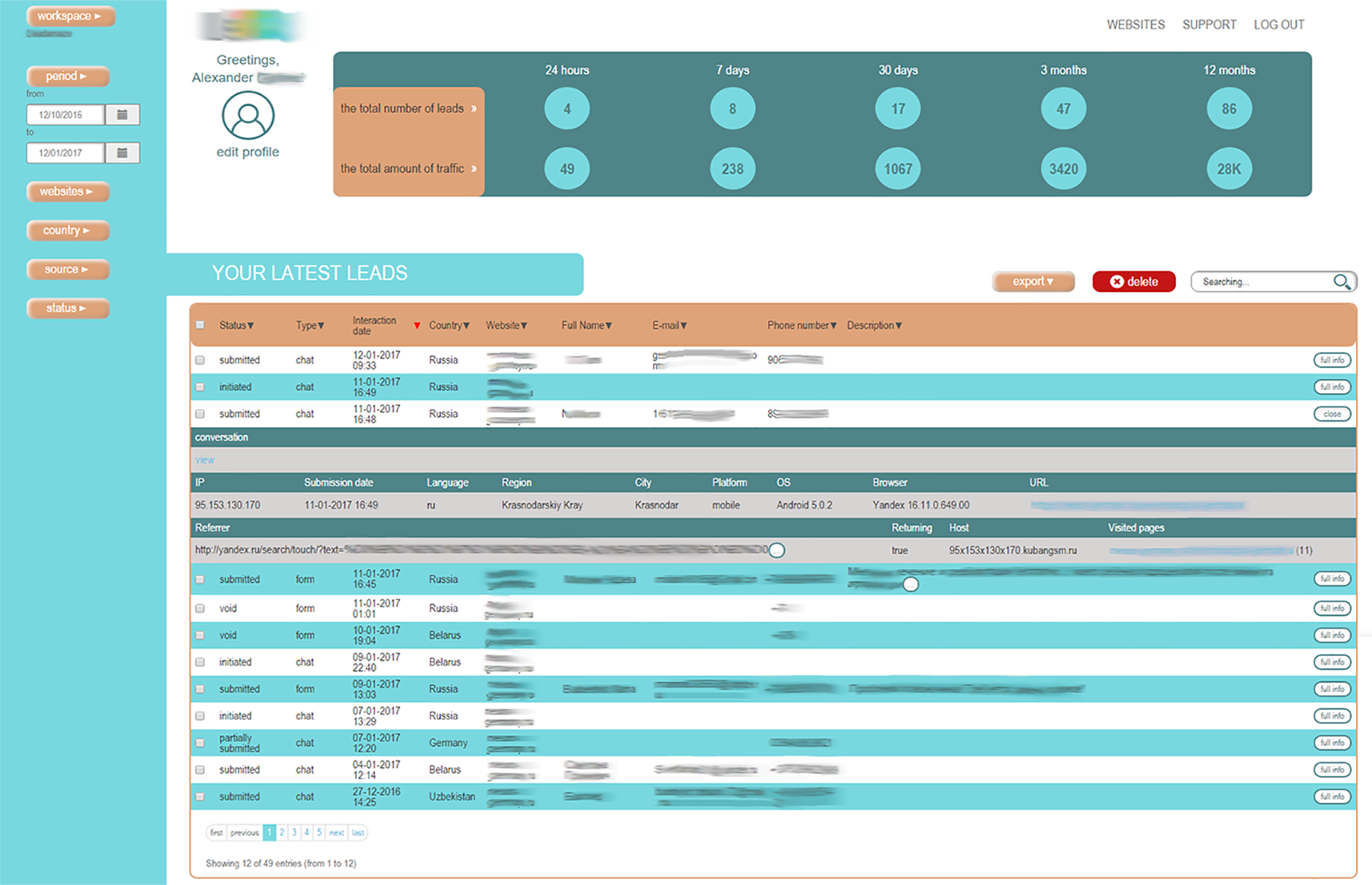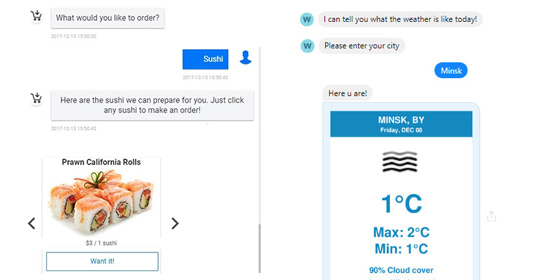Client
Our client is the founder and chief executive officer of a startup company from Germany. He looked for engineering resources, found Belitsoft via Google and chose us out of several nearshore and local companies.
Challenge
One of the major problems almost every business has is getting quality leads from it’s website in a cost-effective way. A “lead” is a marketing term that refers to a potential customer who has expressed an initial interest in a business' products or services and has left his/her contact information. However, there are not so many effective lead gathering web tools to solve this problem. Additionally, more and more website visitors have become indifferent towards classic lead gathering tools such as standard pop-up chats and contact forms.
Our client had come up with a new approach in the lead generation business and patent several ideas. Intelligent chat-bot became a crucial part of his ideas, as it would imitate very naturally the human consultant interested in helping website visitors.
"Simplicity of usage" and "high efficiency" of the platform should be the main keywords to define its capabilities:
- After creation of a personal account inside the SAAS Web Platform a website owner gets a piece of code (like the Google Analytics Counter’s code), which he has to paste once into his website;
- Soon after that Chat-bot starts to convert the website visitors to leads in 24/7 intervals;
- Gathered leads are privately stored inside the personal account of the website owner within the SAAS Web Platform;
- To use the capabilities of the platform, the website owner has to pay a monthly fee.
Process
After signing an NDA, our project manager/business analyst and lead developer went on a business trip to the client’s office in Berlin. The goal was to gather the software requirements. Soon after that, a software requirements specification was prepared and the contract was signed. We successfully started software implementation process. The client monitored our work remotely (via Jira and Skype), and visited our office several times.
We used Agile methodology to meet deadlines; development was divided into sprints of 1-2 weeks each. Functional and regressive testing has been performed each time before delivery.
The following technologies and platforms are used for this project: React, Node.js, MongoDB, and MySQL. These modern instruments allow getting and transferring data in real-time and can handle multiple requests simultaneously.
Results
We successfully developed chat-bot to convert website visitors to leads and database application to store them.
How does the Chat-Bot work for lead generation?
- The chat-bot imitates trained human consultant specialist who provides a dedicated attention to every website visitor;
- The chat-bot adapts automatically its design and “call to action” phrases (aimed at encouraging the dialog) to the current webpage’s design and content;
- The chat-bot understands the context of the conversation to be able to answer not just the lengthy questions, but also the short ones;
- The chat-bot can follow the topic of conversation and change it depending on the situation;
- The chat-bot can gather contact details of the user in a very natural manner during the conversation rather than at the beginning;
- Machine-learning is another interesting feature of the chat-bot, which allows it to test and apply the most effective lead-generation strategies for different groups of users (boring A/B testing is off).
How it works behind the scenes
Feature “Context-driven welcome message”
The chatbot determines the semantics of the article and sends a welcome message relevant to the article’s topic through the live chat.
For example, on the page titled “Adenocarcinoma”, he would greet a user with this: “Hello! Are you interested in adenocarcinoma treatment?” This makes it different from common chatbots that either greet visitors with a standard phrase (e.g. “Hello! Thanks for your interest in our services. Can we be of any help?”) or need an administrator to manually set the greeting according to the topic of each page.
Feature “Context-aware conversation”
The chatbot determines the semantics of the discussion in chat and reacts accordingly.
For example, if the user asks “What method is used for it?” the chatbot will answer: “Usually, adenocarcinoma’s treatment of choice is surgery. Afterward, chemotherapy and/or radiotherapy might be prescribed. Would you like to talk to our medical consultant? It’s completely free of charge”. The chat remembers that the discussion concerns adenocarcinoma treatment even though the user didn’t mention a specific disease. This makes the bot different from common chatbots that process the last phrase and don’t remember the context of the discussion.
How did we make this work?
We used NLP (Natural language processing) techniques to make the chatbot act natural.
- We created predefined semantic categories associated with medical tourism, the corresponding entities, and relationships between them (for example which Berlin clinic can treat myocardial infarction with shunting). To do this, we’ve uploaded a dictionary consisting of 3.000 keywords to the MongoDB database. This includes words from the International Classification of Diseases and International Classification of International Classification of Health Interventions.
- Our semantic analyzer applies a word tokenization algorithm to parse each full-text (both from a website or a chat) into component words.
- Our syntactic analyzer removes stop-words and brings the words to its base form.
- Named Entity Recognition algorithm and Relationship Extraction algorithm help our chatbot to match unstructured text with our semantic kernel to extract context and drive context-aware communication.
Over a period of one year, Belitsoft’s cooperation with the client has grown into a strategic and friendly relationship, where the client started to recommend us to his partners/friends and left a positive review of his experience working with us.
"Belitsoft is a very devoted group. I had a meeting with a potential investor and needed to finish sprints in time. One of Belitsoft's developers worked continuously through the weekend for this.
Out of all the companies that I approached for the project, Belitsoft gave me the most professional impression. They were serious, thorough and quick, which is exactly how Belitsoft handled the work later on."
Related cases
Recommended posts
Our Clients' Feedback






















.png)
.jpg)
.jpg)
















We have been working for over 10 years and they have become our long-term technology partner. Any software development, programming, or design needs we have had, Belitsoft company has always been able to handle this for us.
Founder from ZensAI (Microsoft)/ formerly Elearningforce